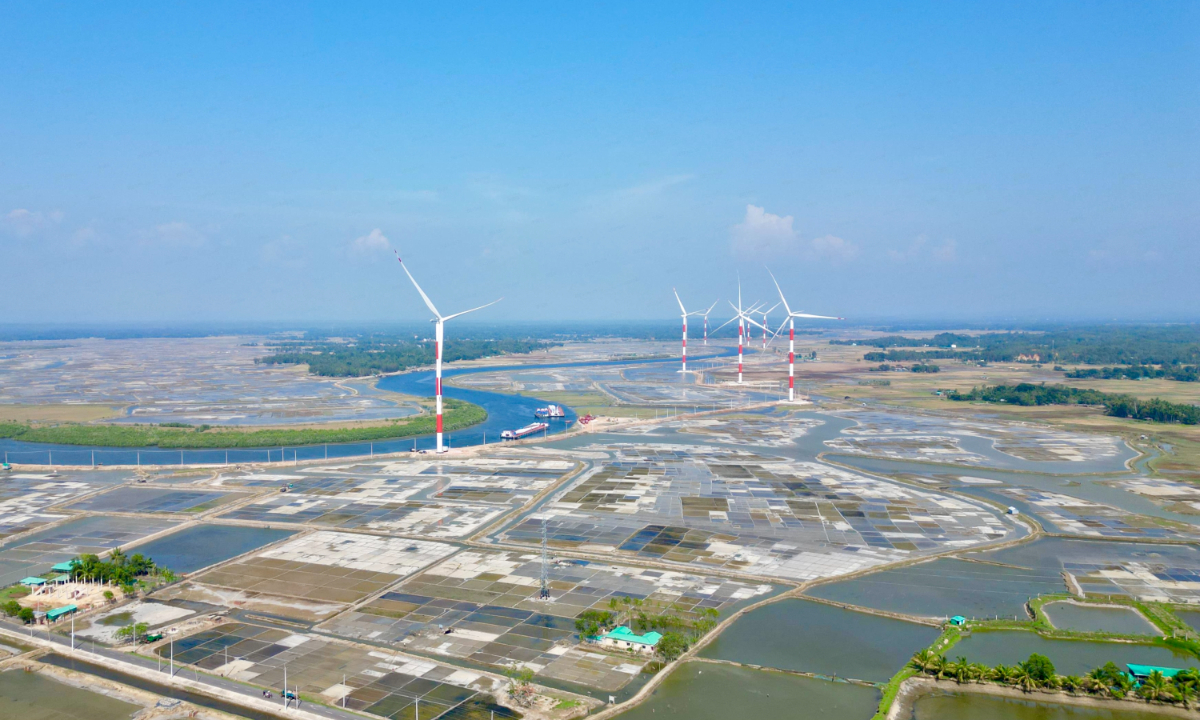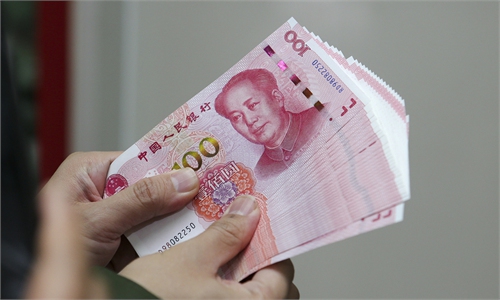China-constructed wind power plant feeds Bangladesh grid, facilitates green development

Wind power plant located in Khurushkul area of Cox's Bazar in Bangladesh Photo: Courtesy of Chengdu Engineering Corporation Limited, a subsidiary of Chinese state-owned enterprise Power Construction Corporation of China.
The first China-constructed new-energy project in Bangladesh - a wind power plant popularly known as Pankha - has successfully entered operation and is generating electricity, facilitating the country's energy transition and green development.
The power plant located in Khurushkul area of Cox's Bazar is the country's first large-scale centralized wind farm, with a construction scale of 66 megawatts, and 22 wind turbines with a single capacity of 3.0 megawatts were installed. The project includes a supporting 132-kilovolt booster station, a comprehensive building, a power distribution building and ancillary facilities.
It now feeds 30 megawatts of electricity into the national grid on a trial basis since Friday and will run at the full capacity by the end of year, according to local media.
The project was designed, procured and constructed by Chengdu Engineering Corporation Limited, a subsidiary of Chinese state-owned enterprise Power Construction Corporation of China. According to a statement sent to the Global Times, the average annual power generation of the project is 144.92 million kwh, which can save 44,500 tons of standard coal.
The PowerChina branch leveraged its extensive experience in overseas projects and overcame the impact of COVID-19 epidemic and the long rainy season, the statement read.
The project will not only push forward Bangladesh's wind power development, but is also of great significance in aiding the coordinated development of the surrounding agriculture and tourism industries, and to transform and upgrade Bangladesh's power grid and support the country's high-quality green development.
As a key partner country of China under the Belt and Road Initiative, Bangladesh has already benefited from the Dasher Gandhi sewage treatment plant located in suburb of its capital Dhaka, which was formally put into use in April 2022.
The China-funded project is the first modern large-scale sewage treatment plant in Bangladesh and the largest single sewage treatment plant in South Asia so far. It can treat the domestic sewage of nearly five million people across the urban area of Dhaka and greatly improve the surrounding water environment.
The BRI has become a key pillar of China-Bangladesh cooperation. In recent years, bilateral relations have become increasingly strong and trade between China and Bangladesh in 2022 reached $27.79 billion, a year-on-year increase of 10.7 percent, according to data from the Ministry of Commerce.
On Saturday, Chinese Vice Foreign Minister Sun Weidong and Bangladeshi Foreign Secretary Masood co-chaired the 12th round of China-Bangladesh diplomatic consultations in Dhaka.
China has always placed China-Bangladesh relations at an important position in the neighborhood diplomacy…China is willing to work with Bangladesh to intensify high-level exchanges, bridge development strategies, vigorously promote the BRI and major project cooperation, and actively expand coordination and cooperation on economic and trade investment, agriculture and fisheries, disaster prevention and mitigation, marine affairs, culture and humanities and multilateral affairs, Sun said.
Masood said that Bangladesh cherishes its traditional friendship with China and regards China as a trustworthy and important development partner. Bangladesh has always firmly adhered to the one-China policy, and is willing to work with China to jointly build the BRI, deepen cooperation in various fields, and promote the continuous development of Bangladesh-China strategic cooperative partnership.
Global Times


